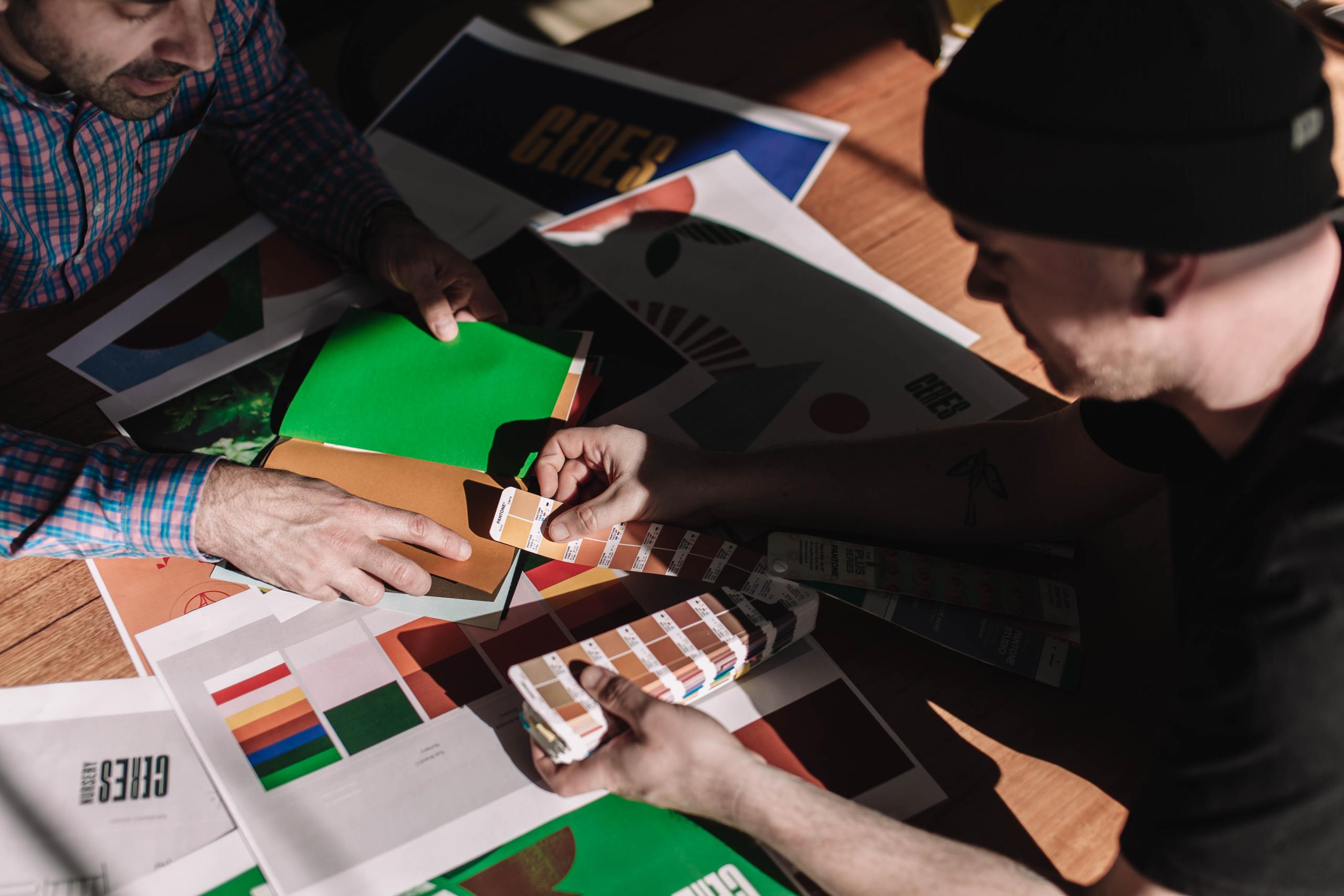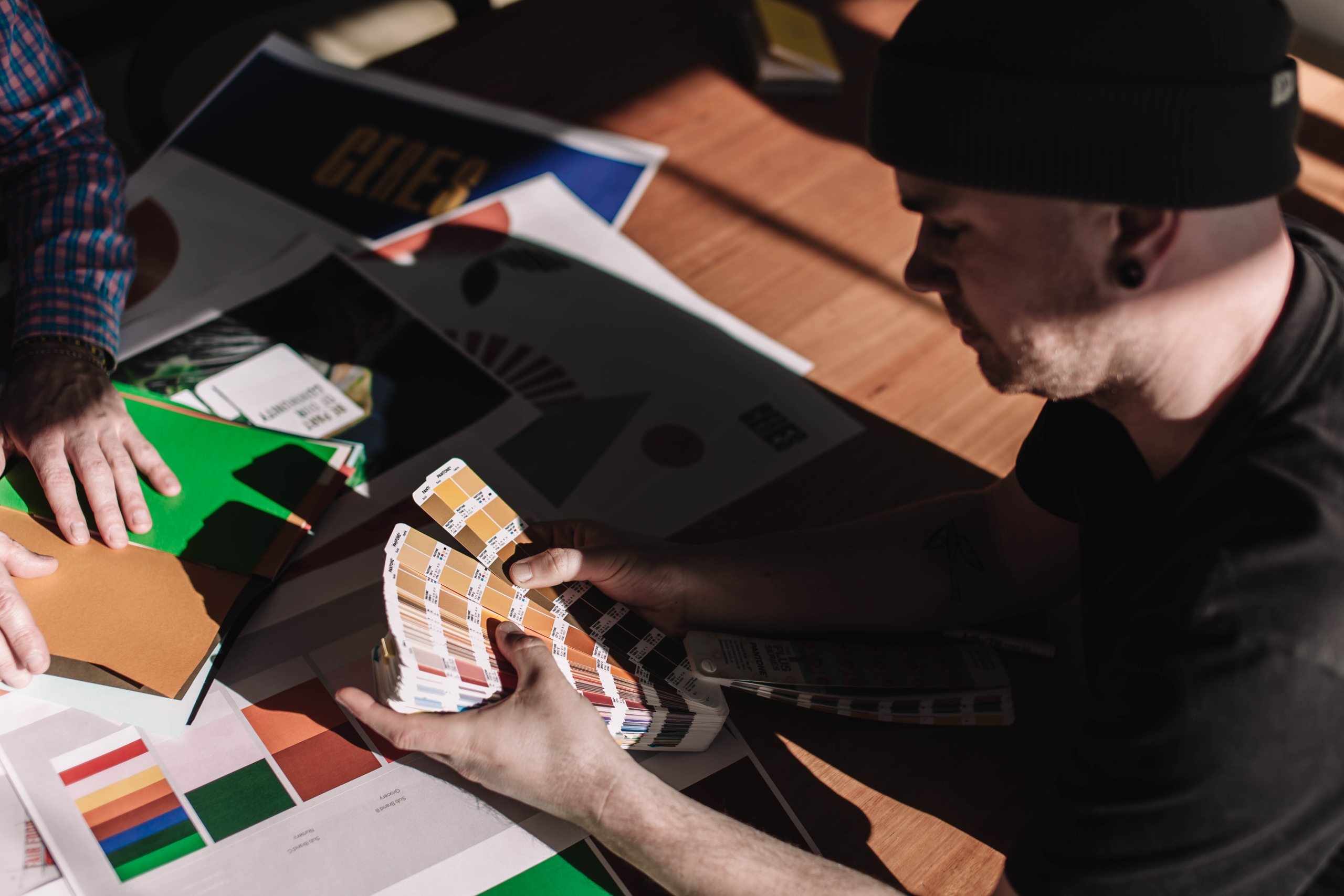23.06.208 min read
The perception of colour.
Colour theory is closer to psychology than it is to science. Our perception of it is subjective, it’s different from our ancestors, and it’s more temperamental than the weather.
CategoryThoughtsWordsJames LakeImagesJamie Judges
As illustrated by Pink Floyd’s Dark Side of The Moon album cover — white light is made of a rainbow. When this light hits an object, some of the rainbow is absorbed, and the rest is reflected back as colour. Darker objects absorb more light and reflect less, which is why black cars get hotter in summer. This part is science. But beyond this is where the trouble lies. Our brains understand that colour and light are contextual. The same object can appear differently depending on the time of day, the type of light (natural or artificial) or the surrounding objects. So when we see colour, our brains align the vision with the known context in an attempt to overcome these variables. This is known as colour constancy.
So what happens when the context is unknown? During a slow news week in 2015, the colour of a dress became a global debate. Some saw it as white and gold; others saw it as black and blue. Why? The dress in question was photographed close to a window. The photo was overexposed with an ambiguous mix of natural and artificial light. This ambiguous mix is important because it shows how colour constancy can warp our perception of reality.
Colour constancy relies on our own understanding of light and colour — something that we all experience differently. People who work outside and go to bed early will have a different light bias to an office worker who stays up late. When the context is ambiguous, our brains default to the most familiar setting, creating a different colour experience for everyone.
The dress is an extreme case. In most scenarios, the colour constancy bias is much more nuanced: Greeny-blues may be bluer to some; others may see more depth in a colour and pick up on greens or blues in what appears to be flat grey to most. Furthermore, our perception may change when presented with multiple colours, such as black feeling darker when surrounded by lighter shades.


Throughout history, our understanding of light and colour has changed too, shifting our perception. The Egyptians were the only ancient civilisation to possess blue dyes. This gave them a word for blue and made it definitely different from other colours. The Ancient Greeks, on the other hand, didn’t have blue dyes. So they didn’t have a word for blue, and their literature shows they were unable to distinguish it from their known pallet. (In Homer’s Odyssey, the sea is described as ‘wine-dark’). Blue is a rare pigment. There’s not much blue in the natural world outside of the sea and the sky. Without a means of creating it, blue remains indistinguishable. In almost all ancient languages from Hebrew to Japanese, ‘blue’ was the last colour to receive a name.
The idea that Ancient Greeks saw the sky and sea as red may be difficult to accept. But as their technology developed so too did their understanding of colour. This begs the question — are we currently at the limits of our understanding of colour? Or is there a hue, right in front of us, that our brains ignore?
“Colour constancy and production woes aside, colour is a powerfully emotive tool. It is often the first thing we notice when engaging with a brand. It can alter our mood, suggest intent and shape expectations.”
— James Lake

Did you know?
The Pantone System, also known as Pantone Matching System (PMS), was created by Lawrence Herbert in 1963. Herbert was a young employee of a printing company, and as soon as he realised how difficult it was to obtain effective results in colour printing, he was driven to create a standardised colour system. Such system has become a cornerstone in the world of graphic design and printing, allowing professionals to communicate clearly and precisely about desired colours.


Colour can also be temperamental in production. Just as the Egyptians may have noticed variation in their blue on different fabrics, we experience variation here in the twenty-first century. Colour will appear differently depending on an exhaustive number of variables: paper colour; the reflective properties of the inks and paper; the print method; colour capacity; screen brightness; and so on. These variations could fill a blog post on their own, but for now let’s just agree that the same colour can appear different on every screen, every sheet of paper and every tote bag.
How does this relate to brand design? Colour constancy and production woes aside, colour is a powerfully emotive tool. It is often the first thing we notice when engaging with a brand. It can alter our mood, suggest intent and shape expectations.
That’s why one of the first steps in brand design is to establish a ‘colour story’. This is a palette that aligns with a brand’s story, its values and its origins. We typically start with tangible references that contribute to this story, such as building materials, an environment or ingredients. The goal is to create a cognitive link with familiar colours known to the client and their audience. These colours are workshopped with the client and given names that reinforce their origin, such as ‘Egyptian Blue’.



